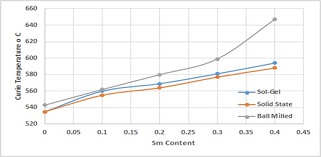Day :
- Surface Science and Engineering | Energy Materials | Materials and Devices
Location: London

Chair
Alberto Tagliaferro
Politechnico Torino, Italy

Co-Chair
Yukishige Kondo
Tokyo University of Science, Japan
Session Introduction
Yukishige Kondo
Tokyo University of Science, Japan
Title: Active demulsification of stable emulsions using light
Time : 11:50-12:15
Biography:
Yukishige Kondo received his B. Eng. in Chemical Engineering from the Tokyo University of Science (TUS) and earned his Dr. Eng. for his doctoral thesis concerning “Solubilization of organic compounds using surfactant vesicles”. His professional career started by joining the faculty at the Department of Industrial Chemistry, TUS. After he worked as a visiting assistant professor at University of Wisconsin–Madison from 2004 to 2005, he was promoted to Professor in 2015. He is working on “the synthesis of novel surfactants and their solution properties” and “preparation of metal-lustrous crystals using organic compounds” along with 24 students. He has a fascination for aircraft; he enjoys watching airplanes at airports and traveling by air.
Abstract:
Emulsions are metastable systems where one liquid (dispersoid) is dispersed as particles in another liquid (dispersion medium), and have been used in many fields, including cosmetics and paints. Many research has focused on the enhancement of emulsion stability. On the other hand, Demulsification, which is a phase separation phenomenon of stable emulsions, also plays an important role in industry. For example, aqueous waste fluids containing hazardous substances can be mixed with an oil to obtain an emulsion, and then the emulsion is demulsified to extract hazardous substances into the oil phase. This process is called “emulsion liquid membrane extraction”. Demulsification has been so far performed by adding chemicals or by physical techniques such as the application of high electrical fields, or mechanical external forces and the variation of temperature. In this work, we will focus on the control over the stability of emulsions by an external stimulus, which is light. As a photo-responsive surfactant, a cationic gemini surfactant having an azobenzene group (C7-azo-C7) has been synthesized. C7-azo-C7 exhibits photo-isomerization between trans and cis isomers. When mixtures of trans-C7-azo-C7 aqueous solution and n-octane were homogenized, stableemulsions were obtained in a specific region of weight fractionand surfactant concentration. Fluorescence microscopy observations using a small amount of fluorescent probes showedthat the stable emulsions were oil-in-water (O/W)-type. As can be seen in Figure 1, UV irradiation of stable O/W emulsions promoted the cis isomerization of trans-C7azo-C7 and led to the demulsification. Dynamic interfacial tension between aqueous C7-azo-C7 solution and octane temporarily increased with UV light irradiation. From these results, the cis isomerization of trans-C7-azo-C7 molecules at the O/W interface on UV irradiation leads to direct contact between the water and octane phases, because of the reduction of molecular area at the interface, and subsequently makes the emulsions demulsified.

Janwa El-Maiss
Université de Strasbourg, France
Title: Morphogenic mussel inspired self-construction of versatile enzymatic biosensors by electrochemistry
Time : 12:15-12:40
Biography:
Education: Lebanese University, Lebanon, B.S Chemistry; Claude Bernard University, France, M.S Organic Chemistry and synthesis of bioactive molecules; University of Nice Sophia-Antipolis, PhD Material chemistry and surface functionalization, Advisor: Prof. Frederic Guittard. Current position; Postdoctoral fellow a University of Strasbourg, Charles Sadron Institute. My early research involved synthesis of the natural product “Rhoptelol B”. During the course of my Ph.D, I was interested in low surface energy materials and their applications in both solid and liquid interface affording to superhydrophobic surfaces and non-bio accumulated surfactants. I am currently working to develop a new glucose biosensor elaborated by crosslinking the active enzyme covalently in the matrix.
Abstract:
Biosensors have been widely applied due to their high sensitivity, potential selectivity, in addition to the possibility of miniaturization/ automation. Enzyme immobilization is a critical process in biosensors development with the necessity to avoid their denaturation and ensure their accessibility towards the analyte Among all of the enzymes applied in these biosensors, GOx is the most common one owing its importance for detection of blood glucose and its effectiveness in the diagnostic analysis of diabetes.
Electrodeposition of macromolecules is increasingly considered to be the most suitable method for the design of biosensors. Here, we present for the first time the elaboration of a mussel-inspired versatile biosensor using a “One Pot” electrochemical morphogenic approach leading to a covalently cross-linked matrix of biscatechol and glucose oxidase with no leaking observed. The immobilized GOX in the film shows an electrochemical response to glucose using ferrocene methanol as free mediator in solution and has a wide linear range from 1 to 12.5 mM as well as a good sensitivity and affinity to glucose. All these advantageous features allow the development of miniaturized biosensors through functionalization of a single electrode out of a microelectrode array.
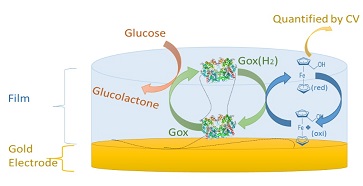
Sam HY HSU
City University of Hong Kong, China
Title: Photoelectrochemical characterization of lead-based hybrid perovskite semiconductors
Time : 13:25-13:50
Biography:
Sam H. Y. Hsu’s research interests involve the material design, synthesis, processing, imaging, spectroscopy and solar energy application, aiming to explore fundamental properties and interactions of hybrid perovskite semiconductors and functional metallopolymer materials for developing efficient solar energy conversion processes. He has keen interests in photoinduced charge transfer processes, interfacial electron transfer, electrochemical hydrogen generation, and photoredox reactions for photovoltaics and solar fuel production. The investigations between material phenomena rely heavily on concepts and techniques of material and physical engineering, consisting of photophysics, electrochemistry, photoelectrochemistry, scanning photoelectrochemical microscopy imaging, ultrafast transient absorption and time-resolved photoluminescence spectra.
Abstract:
A variety of PbI2/MAPbI3 perovskites were prepared and investigated by a rapid screening technique utilizing a modiï¬ed scanning electrochemical microscope (SECM) in order to determine how excess PbI2 affects its photoelectrochemical (PEC) properties. An optimum ratio of 2.5% PbI2/MAPbI3 was found to enhance photocurrent over pristine MAPbI3 on a spot array electrode under irradiation. With bulk ï¬lms of various PbI2/MAPbI3 composites prepared by a spin-coating technique of mixed precursors and a one-step annealing process, the 2.5% PbI2/MAPbI3 produced an increases photocurrent density compared to pristine MAPbI3 for 2mM benzoquinone (BQ) reduction at − 0.4 V vs Fc/Fc+. As a result of the relatively high quantum yield of MAPbI3, a time-resolved photoluminescence quenching experiment could be applied to determine electron-hole diffusion coefficients and diffusion lengths of PbI2/MAPbI3 composites, respectively. The diffusion coefficients combined with the exciton lifetime of the pristine 2.5% PbI2/MAPbI3 (τPL = 103.3 ns) give the electron and hole exciton diffusion lengths, ~ 300 nm. Thus, the 2.5% PbI2/MAPbI3 led to an approximately 3.0-fold increase in the diffusion length compared to a previous report of ~ 100 nm for the pristine MAPbI3 perovskite. We then demonstrated that the efficiency of liquid-junction solar cells for 2.5% excess PbI2 of p-MAPbI3 was improved from 6.0% to 7.3%.
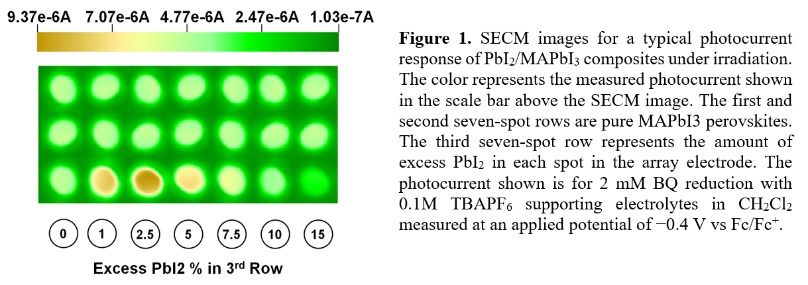
César Pascual-GarcÃa
Luxembourg Institute of Science and Technology, Luxembourg
Title: A redox active self-assembled monolayer both a sensor and actuator
Time : 13:50-14:15
Biography:
César Pascual-García graduated in Solid State Physics at the Universidad Autónoma of Madrid in Spain with a dissertation of Electronic optical transitions in III-V semiconductors. He obtained his PhD in Condensed Matter Physics in 2007 at the Scuola Normale Superiore of Pisa in Italy with the Thesis “Low lying excitations of few electrons quantum dots”. At the beginning of his career he collaborated in fundamental topics centered on the electron correlations of semi- and super- conductor materials, but then his interest shifted to biology-applied topics as he started working as Scientific Officer at the Institute for Health and Consumer Protection of the European Commission. Currently he is an ATTRACT fellow and Lead Research Scientist at the Luxembourgish Institute of Science and Technology where he is leads the activities for electrochemical sensors and actuators for medicine applications at the Materials Research and Technology department. His current research focus are semiconductor nanowires for bio-sensing and the miniaturized control of chemical reactions
Abstract:
Redox active self-assembled monolayers (SAMs) are emerging materials in the design of key devices like sensors, batteries, or chemical switches. Amino thiol phenol (APT) is a very well studied molecule with a low redox potential, which is able to form SAMs in noble metals thanks to the affinity of its mercapto group and the interactions among the benzene rings. The dissociation constant (pKa) of the amino-group and its interaction with protons has been used to fabricate plasmonic pH sensors associating the molecule to metal nanoparticles which enhance the vibrionic signals that reveal the protonation state of the molecule. Recently, the corresponding concept, namely the modification of the pH through the proton release was proposed by the group of Itamar Willmer. The electrochemical change of the pH was allowed by a composite material which used Au Nanoparticles to increase the surface area to a point where the proton release induced by electrochemical action on the APT was sufficient to achieve a significant modification of the pH. Though, the system showed some signs of electrode degradation, the article proposed a new route to control electrochemical reactions. We studied an alternative to the concept of a nanoparticle concept, by keeping the self-assembled monolayers, which exhibited a better behavior in terms of quasi-reversibility of the proton exchange reactions. We studied different methods of functionalization including the traditional electrochemical polymerization and less common ones like photo- polymerization and plasma polymerization. In addition, we showed that the SAM in addition of sensing it can be used as an effective actuator to control the pH in microfluidic devices. We will propose microfluidic configurations of how use these monolayers and applications to take advantage of the miniaturization possibilities and electrochemical control.
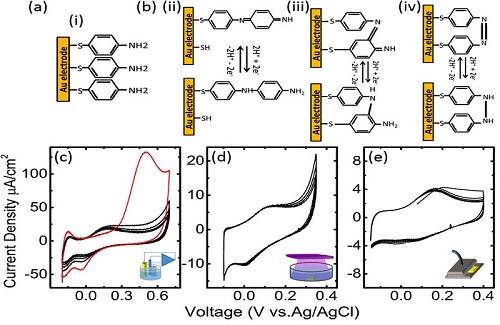
- Advanced Materials | Next-Generation Materials | Emerging Materials for Energy Storage

Chair
Hemalatha Parangusan
Qatra University, Qatar
Session Introduction
Hemalatha Parangusan
Qatra University, Qatar
Title: Enhanced dielectric properties and energy storage performance of PVDF nanocomposites containing ferromagnetic metals doped ZnO nanoflowers
Time : 14:15-14:40
Biography:
Hemalatha has received PhD in Materials science from Madurai Kamaraj University, India. Currently, she is working as a Research Assistant at Qatar University, in the field of energy harvesting. Her research areas of interest include polymer nanocomposites and nanomaterials.
Abstract:
Advanced high k-polymer nanocomposites designed by integrating high dielectric fillers within different polymers have considerable potential in energy storage applications due to their flexibility and ease of fabrication. Dielectric properties and the energy storage performance for various nanocomposites based on polyvinylidene fluoride (PVDF) are demonstrated here in this study. Semiconducting nanoflowers of ZnO were synthesized following hydrothermal fabrication, and the nanoarchitectures were modified by doping with ferromagnetic metals-Iron (Fe), Nickel (Ni) and Cobalt (Co). While doping with Ni, changed the flower like architecture of ZnO in to spherical shape, Co-doping developed nanorods with hexagonal cross sections with no significant change in the structure for Fe-doped ZnO. Different strategies of fabrication methods such as solution casting, sandwiching and electrospinning were practiced for the nanocomposite fabrication. In all cases, the concentration of the nanoparticles was varied between 0.5 wt.% to 2 wt.% and a regular increase in dielectric constant was observed with increase in concentration. At 2 wt.%, the solution casted films of Fe-doped ZnO filled PVDF composite showed a three times increase in dielectric constant. Whereas for the Ni-doped ZnO containing nanocomposite, the increase was about 4.8 times. In the case of Co-doped ZnO, a similar increase in dielectric constant was noticed for electrospun fibers. The significance of fabrication methods as well as the nanoparticle size effects are correlated with the energy storage performances.
Yuanqiang Tan
Huaqiao University, China
Title: Discrete element simulation on the ordered array of carbon fiber with ultrasonic vibration assisting in SLS
Time : 14:40-15:05
Biography:
Yuanqiang Tan has completed his PhD from Central South University of China. He is a professor of the Institute of Manufacturing Engineering of Huaqiao University, a premier research organization of China. He has published more than 50 papers in reputed journals and has been serving as an reviewer of repute journals.
Abstract:
Carbon fiber enforced Nylon materials is a developing technology in selective laser sintering (SLS) process. The strength of the sintering components will increase with ordered array carbon fiber. An ultrasonic vibration assisted directional arrangement method for carbon fiber in powders is proposed. The powder bed model including short carbon fiber and nylon particles with a defined radius distribution, was simulated by discrete element method. The ultrasonic vibration was inserted to the powder bed. The fiber orientation frequency and orientation probability entropy are taken as criteria to evaluate the variation degree of orientation and ordering of carbon fiber. Three process factors, such as ultrasonic vibration amplitude, frequency and vibration time which affect the orientation arrangement of fiber were investigated. The results indicate that, with applying of ultrasonic vibration on the powder bed, the fiber orientation frequency along the vibration direction increased significantly. Moreover, as the vibration amplitude increasing, the degree of fiber orientation changes from high to low. With the enhancement of frequency, the change in the degree of fiber orientation gradually improves, and the ordering increases obviously. The vibration time effect exerting on the degree of fiber orientation and fiber ordering is consistent with the effect of vibration frequency.
The authors acknowledge the financial support from NSFC (11752135)

Pawan K. Khanna
Defence Institute of Advanced Technology (DIAT), India
Title: Application of cyclohexeno-1, 2, 3-selenadiazole via extrusion of selenium in synthesis of copper indium diselenide
Time : 15:05-15:30
Biography:
Abstract:
Cyclohexeno-1,2,3-Selenadiazole is an organo-selenium compound and technologically important precursor. Organo-chalcogens particularly organo-selenium compounds have many useful applications in organic synthesis and pharmaceuticals. C-Se-N containing heterocycles can be exploited for their further use due to possible extrusion of Se by elimination of N2 molecules. 1,2,3-selenadiazole was utilized as precursor for synthesis of CuInSe2 (CISe) nanoparticles of various shape and size via thermal extrusion of selenium from cyclohexeno-1, 2, 3-selenadiazole (SDZ). The advantage of SDZ as a selenium precursor lies in its less stability towards thermal treatment leading to easy release of selenium at moderate temperature. The change in reaction temperature during synthesis of CISe exhibited change in physical properties of the CISe nanoparticles. The reactions performed at various temperatures showed variation in shape and size of the CISe nanoparticles which was confirmed by XRD, particle size analyzer, SEM and TEM analysis. Optical studies showed band gap in the range of 1.1-1.7 eV. Variety of shapes with lattice spacing of 0.33 nm corresponding to (112) crystal plane of CISe were confirmed from HRTEM analysis.
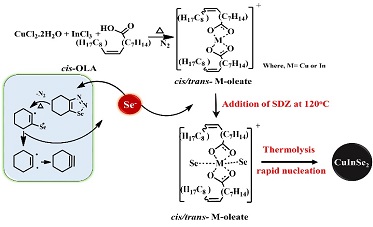
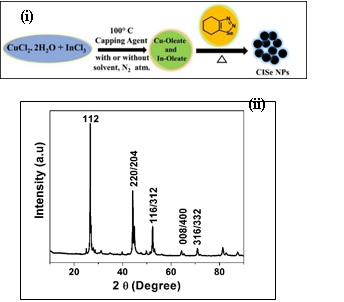
Guangguang Huang
Southeast University, P. R. China
Title: Molecule doping strategy and its application for Mn doped CsPbClxBr3-x nanocrystals
Time : 15:30-15:45
Biography:
Guangguang Huang, Ph.D of Southeast University, P. R. China in optical engineering. His researches are focus on synthesis of nanocrystals and their related photoelectric application. Recently, he realized cation exchange in perovskite NCs via molecule doping strategy and synthesized the functionalized Mn-doped dual-emitting perovskite NCs for ratiometric temperature detection.
Abstract:
Evidence-based approaches to the care of patients with type 2 diabetes (T2D) are based largely on clinical trials and routinely bypass practical impediments such as patient preferences, awareness, and motivational barriers. Although uncovering factors that influence adherence in T2D patients is well explored in the literature, the systematic overlap of quantitative electronic health record (EHR) and payer data with qualitative data is lacking. We conducted a prospective mixed-method study of 500 patients with varying levels of glycemic control and oral antidiabetic adherence, identified through EHR and payer information. We developed a conceptual model using two online methods overlaid with EHR and prescription claims information. Qualitative insights were collected using two online methods: daily snapshots over a 12-day period that included anecdotes, uploaded pictures, videos and comments about daily postings; and an online panel where patients shared their own views on T2D and adherence and commented on views from other patients. We consented 44 patients with 23 completing the study. Built around adherence measures as the first tier of segmentation and considering glycemic control, disease and attitudinal orientation, the model partitions patients into 8 distinct segments each portraying unique phenotypic characteristics. Although preliminary, these groupings may assist providers, healthcare systems and payers identify patient types and incorporate more effective ways of engaging specific patient groups, thus facilitating greater adherence, better illness management and more robust treatment outcomes.
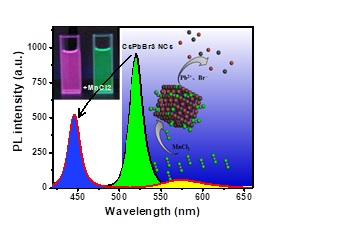
- Nanotechnology in Materials Sciene | Biomaterials and Tissue Engineering | Materials Chemistry and Physics

Chair
Frederic Dumur
Aix Marseille University, France
Session Introduction
Frederic Dumur
UMR CNRS, France
Title: On-surface synthesis of aligned functional nanoribbons monitored by scanning tunnelling microscopy and vibrational spectroscopy
Time : 10:45-11:10
Biography:
Frederic Dumur has completed his PhD from Angers University (France) in 2002. From 2003 to 2008, he was successively a Postdoctoral Fellow in the group of Professor Ben L. Feringa (2003-2005), Nobel Prize 2016, Dr. Norbert Hoffmann (Reims, France), and Professor Francis Sécheresse (Versailles, France). Since 2008, he is Associate Professor at the Institute of Radical Chemistry of Aix Marseille University. He has published more than 180 papers in international journals. Frederic Dumur is specialized in the design of photoinitiators of polymerization under soft irradiation conditions. His research interest also includes the design of polymers for optoelectronics applications (2D polymerization on metal surfaces)
Abstract:
In the blooming field of on-surface synthesis, molecular building blocks are designed to self-assemble and covalently couple directly on a well-defined surface, thus allowing the exploration of unusual reaction pathways and the production of specific compounds in mild conditions. Up to now, most of the single-layered surface covalent organic frameworks (SCOFs) have been prepared by Ullmann dehalogenation reactions of brominated aromatic compounds or trimerization of diboronic acids. Here we present our results concerning the creation of functionalized organic nanoribbons on the Ag (110) surface by mean of an oxidative coupling unprecedented in the literature. Interestingly, length of the resulting nanoribbons could be efficiently controlled by mean of the temperature deposition whereas the anisotropic substrate could act as an efficient template fostering the alignment of the nanoribbons, up to the full monolayer regime.

Reem AlBilali
Imam Abdulrahamn Bin Faisal University, Saudi Arabia
Title: The influence of tuning the particle size of titania-supported palladium nanoparticles on their catalytic activity for liquid phase transfer dehydrogenation of 1-phenylethanol
Time : 11:10-11:35
Biography:
Reem Khalid AlBilali is an assistant professor in physical chemistry at the IAU University, Saudi Arabia since 2012. Her research interests are the synthesis and characterization of novel stable monodisperse and bimetallic nanoparticles and their catalytic applications, biomass transformation to fine chemicals and fuels. She worked at Cardiff Catalysis Institute at Cardiff University, UK, as a visiting postdoctoral research fellow during the period of 15/Sep/2015 to 14/Sep/2017. AlBilali has many publications in both Arabic and English language, and she is a (MRSC) member in the Royal Chemical Society (RSC) and a member in the American Chemical Society, Saudi Chemical Society and the National Association of Corrosion Engineers (NACE).
Abstract:
The influence of varying the stabiliser type (PVA, PVP, and THPC) during the synthesis of palladium nanoparticles via sol-immobilisation technique on the resulted particles, and their catalytic activity on the liquid phase transfer dehydrogenation of 1-PhEt has been investigated. The chemical composition and morphology of the fresh and used catalysts were determined using XRD, XPS, BET, SEM-EDX, and TEM. By evaluating the catalytic activity of the series of 1% Pd/TiO2 catalysts prepared using different PVA/Pd weight ratio, the results illustrate that two main parameters can mainly control the catalytic activity of 1% Pd/TiO2 in the liquid phase transfer dehydrogenation of 1-PhEt, these are Pd(0)/Pd(II) ratio and the particle size of the catalyst. The results show that two different regimes can be identified during the liquid phase transfer dehydrogenation of 1-PhEt. At the initial time, the particle size parameter appears to control the catalytic performance of 1-PhEt while the effect of Pd oxidation state starts to take place after reaching iso-conversion, where the percentage of Pd(0)/Pd(II) increases while the reaction proceeds.
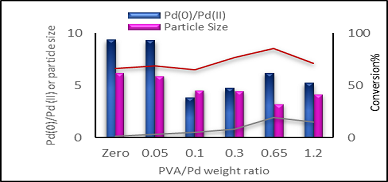
Mary E. Craig
Oakland University, USA
Title: A review on the characterization of the enthesis (osteotendon junction) – From classic histology to approaches in material science and engineering.
Time : 11:35-12:00
Biography:
Mary E. Craig is a classically trained anatomist with extensive experience in skeletal biology. Mary has studied skeletal material from archaeological sites, bone excised from modern humans and animals, and the engineering of biomimetic bone. Mary is keenly interested in creating “off-the -shelf” enthesis (osteotendon junction) and the use of “green materials” in medicine – that is to say, materials that in their natural form (limited manufacturing processes) can be used for implant. There is some evidence that green materials reduce incidence of rejection and implant failure and further considerations for manufactures to reduce the toxic-foot print on the environment. In addition to her research interests Mary has instructed anatomy since being an undergraduate and has expertise in clinically- based human and veterinary anatomy, neuroanatomy, forensic and physical anthropology, osteoarchaeology, and the nanomechanics and histology of biological materials. She is a tenured faculty member of the Department of Biological Sciences at Oakland University.
Abstract:
Statement of the Problem: Auto grafts and implants of the enthesis will play an important role in the health care in the 21st. Century due to the largely world-wide aging of populations and the debilitating effects of osteoarthritis and associated bone and tendon pathologies. It is well-documented that tendons avulsed from their skeletal attachment of limb bones do not heal well and are prone to rupture following reattachment. Theoretical Orientation: Failure of the enthesis repair may, or may not, be due to the use of unsuitable biomaterial implants at the bone tendon interface, altered tendon mechanics created by employing bone pins which change the contractile force ratio, and/or change in the configuration of collagen fibrils at the attachment site leading to rupture at subsequent stress points. Failure could also be attributed to cytological differences within the periostea or tissue mechanics. Findings: A review of the current literature demonstrates very little histological information on the periosteum or the enthesis and there are only a few publications on nanoindentation of these tissues. There is no known interdisciplinary publication to date. Further, current research demonstrates a lack of consistency between researchers with regard to biosample preparation for tribology; making it difficult for researchers to compare results and apply that information to the in-vivo state. Conclusion & Significance: An inter-disciplinary approach is needed to examine the histology of the periosteum as a material that is composite lamellar in nature and provide greater detail on constituent layers. A standard method for preparation and analysis of biosamples for tribology is needed. Techniques between the pure sciences and engineering are likely to provide better information to compare and contrast the enthesis nanomechanics. An interdisciplinary focus and participation with industry will allow us to create complex biological structures for implants to improve patient outcomes.


M. Chenani
Islamic Azad University, Iran
Title: The effect of SiO2 particle size on hemostatic properties of a novel hybrid as a styptic for severe bleeding
Time : 12:00-12:25
Biography:
Maryam Chenani has been studying and researching in new biomaterials and drug release for more than 7 year, she spend 5 years of her professional studies on blood coagulation in severe bleeding. She collaborates in coagulation part of the Iranian Blood Transfusion Organization to design the gelatin-base nano-hybrid which are recently tested on animals. These tests recorded the extraordinary effect of this material on reduce the coagulation time. There are two published books in design and creation of nanomaterials by Maryam Chenani. In addition, she has been attended to several international conferences and published some papers in these fields.
Abstract:
Trauma and its results such as uncontrolled bleeding are some of the most common cause of death. The bleeding and its shock can be cause of serious injuries in vital organs like brain, heart and kidneys in the early stage. Therefore, fast hemostasis is essential as a strategy. The aim of this study was to investigate the effect of SiO2 particle size of gelatin/ silica hybrid on hemostatic properties and especially on accelerating the coagulation cascade as a styptic for severe bleeding. The characteristics of blood coagulation (using activated partial thromboplastin time), platelet adhesion (loctate-dehydrogenase), blood and water absorption, structural properties (using UV visible spectroscopy) as well as size analysis (using dynamic light scattering) have been investigated. Hybrid hemostatic behavior varied drastically by changing the particle size, so that the hybrid with micro-meter SiO2 particle size of about 1µm demonstrated very poor ability in platelet adhesion with approximately 3% absorption. Also the activated partial thromboplastin time was just 2 seconds shorter than the normal time, whereas reduction of particle size beyond a certain limit (100nm), led to both increasing platelet adhesion rate to about 28% and very considerable reduction of PTT. In addition, the time of clot formation reduced by 30 seconds in activated partial thromboplastin time test. Alignment of all results showed that particle size reduction improves the hemostatic behavior of the gelatin/ silica hybrid toward its ideal performance by controlling excessive bleeding.
Keywords: particle size; gelatin/silica hybrid; styptic; coagulation cascade.
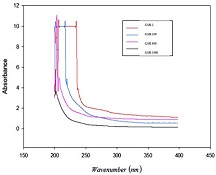
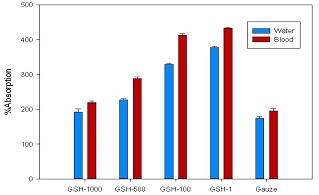
K.Rajendra Udupa
National Institute of Technology Karnataka, India
Title: Antimicrobial activity of electrodeposited copper coating on double zincated aluminium plate
Time : 12:25-12:50
Biography:
Prof. Rajendra Udupa has more than 30 years of teaching and research experience in National Institute of Technology Karnataka, India. Professor has obtained his under graduation, Post-graduation and Phd degree from Indian Institute of Science (IISc) Banglore. The interested areas are extractive metallurgy, welding, casting, physical metallurgy and metal coating. Professor has guided five research scholars and number of UG and PG students. He has completed number of funded projects.
Abstract:
The technique of electrodeposition can be used to deposit an adherent and strong copper film on aluminium products which bears the applications of touch surfaces like door knobs in the hospitals. Experiments were carried out to assess the antimicrobial properties of copper coatings deposited on a double zincated aluminium plate by electrochemical method and compare the same with that of a surface of the bulk copper. The electrodepositions was carried out in a non-cyanide alkaline bath which contains appropriate amount of copper nitrate, ammonium nitrate and tetra ethylene pent-amine. The scanning electron microscopic studies on the coating revealed that nodules of the deposited copper grow unevenly in the columnar form. The cross-sectioned view of the coating resembled that of seeds of promognate. Further, transmission electron microscopic studies on the coating found that individual nodules consist of nano sized crystallite with average size of 32nm. They include a large number of micro twins. The antimicrobial test against methicillin resistant staphylococcus aurous (MRSA) proved that within six hours of exposure 100% MRSA was killed by coated sample whereas that was only 88% by the surface of the bulk copper. The higher efficiency for antimicrobial activity exhibited by the coated film of copper compared to that of surface of the bulk of the copper is attributed to higher surface area possessed by former compared to latter one. In addition, because of the complex topographic formation of electrodeposited copper coating, the number of active contact points in touch with bacteria is quite high compared to those on the surface of the bulk copper. The mechanisms for the better anti-microbial activity compared to bulk copper are discussed in the paper.
K. Guergouri
University Larbi Ben M'Hidi of Oum El Bouaghi, Algeria
Title: Investigation of structural and electrical properties of manganese doped ZnO varistors prepared from nanopowders
Time : 13:35-14:00
Biography:
Kamel Guergouri has completed his PhD (Doctorate) at the age of 28 years from Marie Curie University (France) and works as Professor in physics and researcher at Constantine University (Algeria). He led the laboratory of physics chemistry of semiconductors for four years. He has published more than 30 papers in reputed journals. His biographical profile has been publiched in the 14th edition of « Who’s who in the world » (1997), he was member of the NewYork Academy of Sciences (1994/1995), expert to the journals: Journal of Applied Physics, Physical and Chemical News, International Journal of Electronics and the journal « Siences & Technology,.
Abstract:
Non-ohmic properties of pure and doped zinc oxide varistors are widely used to manufacture good devices. These varistors are generally used in electrical or electronic circuits to protect them from voltage surges. In this study, pure and Mn doped ZnO nanopowders have been synthesized by a soft chemistry method, the sol-gel route. The obtained powders after calcination at 500°C are consolidated and sintered using conventional furnace at 1075°C for 15 min. The obtained pellets are characterized by: X-ray diffraction, MET. The XRD spectra indicate that pure and Mn doped ZnO powders are solid solution, with an average grain size varying between 36.15 nm to 65.92 nm. The grain size decreases with the increase of Mn concentration except for 5 mol % Mn, where there is an unexpected increase. This is confirmed by MET images. The current-voltage J(E) characteristics show that the breakdown electric field increases with increasing Mn concentration ranging from 315.62V/cm to 733.33V/cm except for the Zn-5%Mn-O varistor, where the non linear coefficient α and breakdown electric field are lower. In general the more the grain size decreases the more the varistor effect and the threshold voltage increase.
Lujun Pan
Dalian University of Technology, China
Title: Carbon nanocoils: Synthesis, properties and applications
Time : 14:00-14:25
Biography:
Lujun Pan received his doctoral degree at Osaka Prefecture University in 2000, and became an assistant professor at the same university. In 2007, he returned back to China and worked in Dalian University of Technology as a professor. He is directing the research center of nanomaterials and optoelectronic technology. His research interesting is in carbon nanomaterials, including the synthesis of carbon nanotubes, carbon nanocoils and graphenes, their physical properties and potential applications in field emission devices, MEMS and NEMS, super capacitors and strain sensors. He has managed or participated many research projects in Japan and China and international collaborations, and published over 100 papers in the relative international journals, and also edited or took part in the writing of 5 books.
Abstract:
Due to their specular 3D helical morphology, carbon nanocoils (CNCs) have excellent electromechanical properties, which show potential applications in super capacitors, field-emission devices, microwave absorption materials, near-infrared detectors, elastic composites, and strain sensors. This report focuses on the application of flexible strain sensors using CNCs as sensing medium.
The electrical conductivity of a single CNC is investigated over a wide temperature range from 4 to 300 K. It is found that the smaller the line diameter of the CNC, the bigger the size of the crystalline grain, which results in the better crystallinity and conductivity. Moreover, the temperature behavior of r(T) reveals that the intrinsic electric-transport mechanisms through a single helical CNC are mainly due to a combination conduction processes of the thermal activation, the nearest-neighbor hopping, and variable range hopping.
A straightforward method for measuring Young’s modulus of single CNCs is proposed. Acting as a 1D nano-oscillator, a CNC cantilever was stimulated to vibrate under an alternating electric field. Using a classical continuum model, a formula that accounts for the frequency response of vibration was deduced, and this formula was used to accurately determine the resonance frequency of the CNC. Young’s modulus was calculated from the resonance frequency using a theory based on material mechanics. It was found that Young’s modulus is depend on graphitization of the CNCs.
Based on the electromechanical properties, CNCs for the electrodes of super capacitors, surface enhanced Raman spectroscopy and microwave absorbers, single CNC units for near-infrared detectors, surface tension detectors, strain sensors and the CNC networks for wearable devices and micro-electro-mechanical systems have been studied.
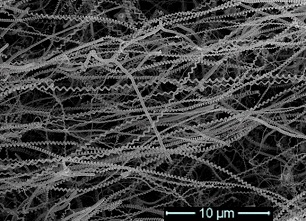
Jameel M. A. Sulaiman
University of Mosul, Mosul, Iraq
Title: (PANI-PTSA) & CoFe2O4/Co0.5Zn0.5Fe2O4 - Nanocomposite absorption materials prepared for EMI shielding in microwave X-band
Time : 14:25-14:40
Biography:
Jameel Sulaiman, B.Sc. Physics – 1982, University of Baghdad. M.Sc. Physics – 2005, University of Mosul. PhD Student; since Nov, 2013 at Technology University, Baghdad, may be within two month I get the degree. He has built his expertise during years of hard work in R&D centers in Iraq since (1988-2003), then (2005) in evaluation, teaching and administration both in education institutions at University of Mosul College of Dentistry. He has a number of applied research and published locally and internationally. In addition to my participation in a number of local and international conferences in Turkey, Saudi Arabia, UAE … as well as a training course in Switzerland.
Abstract:
Statement of the Problem: The risk of Electromagnetic Interference (EMI) waves is constantly required to materials work as shielding, which are widely used in various high technology applications such as medical, communications, military. Polyaniline (PANI-PTSA) & Ferromagnetic - Cobalt Ferrite {CoFe2O4}/Cobalt-Zinc ferrite {Co0.5Zn0.5Fe2O4} nanocomposites are one of these materials which are mix together to have found a solution for these problems. Methodology & Theoretical Orientation: Polyaniline doped Para Toluen Sulfic Acid (PANI-PTSA) be set up by substance oxidative polymerization of aniline in aqueous medium with ammonium peroxydisulphate as an oxidant. The sol–gel auto combustion method has been used to synthesis ferrite samples. Nicholson–Ross–Weir (NRW) method was applied to determine the real and imaginary parts of complex relative permittivity (εr'-jεr'') and permeability (μr'-jμr'').Findings: The composite materials showed maximum absorption frequency range reflection loss of CFP was -7.1 dB at 9 GHz and -9.6 dB at 11.2 GHz, while at the same frequency for CZFP was -17.1 dB and -23.7 dB respectively. Conclusion & Significance: Result indicated that CZFP was the best (> 98% power absorption) than CFP (>50% power absorption).
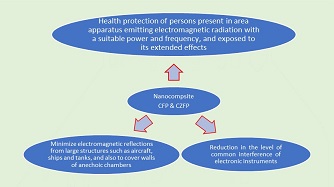
Jingkun Xu
Southeast University, China
Title: Size-tunable CsPbBr3 perovskite ring arrange for stable and ultralow threshold laser
Time : 14:40-14:55
Biography:
Jingkun Xu come from Anhui province of China. He is Optical Engineering PhD of advanced photonics center, southeast university.
Abstract:
Owing to the long carrier lifetimes and diffusion lengths, the high photoluminescence (PL) quantum yield, and the stoichiometric wavelength tenability, CsPbX3 (X = Cl, Br, I) perovskite nanocrystals are extensively applied in various optoelectronics, especially for laser. Recently, perovskite microscale crystals with different morphology, such as spherical, rectangular and hexagonal, have been prepared for whispering gallery modes (WGM) lasing. In this work, we prepared the high quality size-controlled and periodic perovskite hollow ring arrays by a facile microsphere template lithography technology. The common feature for these works is the use of solid crystals as the optical gain media, which may cause more resonating modes and large threshold due to the presence of multiple transportation path of the light. Up to now, it still lacks related reports about the hollow structure of perovskite microscale crystals for WGM lasing applications. In comparison to single hollow perovskite structure, the periodic array of hollow perovskite structures have not only the merits of single hollow structure but also additional collective properties, for instance interference of stimulated radiation, due to the interactions of different hollow structures, and hence available in laser array source, array sensing, and so on. The diameters of as-prepared perovskite rings can be tuned continuously from 2.6µm to 16.9µm by selection of template spheres with different size or additional annealing treatments. Besides, optically pumped room temperature WGM lasing with single mode and low-threshold (~6 µJ cm−2, lower than most solid microscale perovskite crystals) from individual perovskite hollow ring and the coherent radiation from perovskite microring array were obtained.
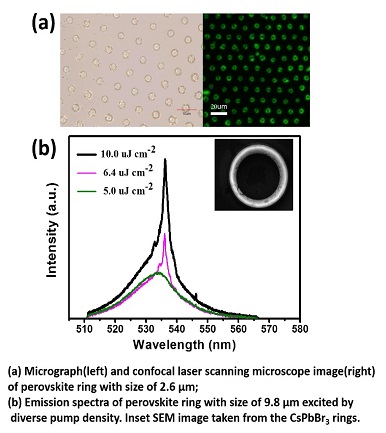
Tokar E.A
IC FEB RAS, Russia
Title: Organomineral sorbents based on chitosanferrocyanide for extraction and concentration of Cs-137 from seawater
Time : 14:55-15:10
Biography:
Tokar Eduard in 2015 defended a bachelor's degree in chemistry. Starting from 2015, he studies at the master's course at the Faculty of Organic Chemistry, Far Eastern Federal University. 2015 Researcher, Department of Elemental Organic Chemistry, Far Eastern Branch of the Russian Academy of Sciences, and Research Associate of the Laboratory of Sorption Processes Institute of Chemistry of the Far Eastern Branch of the Russian Academy of Sciences. In 2017 he graduated from the master's degree in the field of organoelemental chemistry and entered the postgraduate course in chemistry and ecology in the department of nuclear technologies..
Abstract:
To date, most of the ongoing and operational nuclear power plants in the Asia-Pacific region are in the coastal zone using seawater for direct cooling, which creates the danger of the release of radioactive substances into the World Ocean in the event of an accident. In this connection, an important technological task is the concentration of Cs-137 from seawater as one of the most dangerous anthropogenic radionuclides for the purposes of radioecological monitoring. The natural content of 137Cs is 3-5 Bq / m3, which is lower than the lower detection threshold with modern radiometric equipment. To solve this problem, most commonly used materials based on ammonium phosphomolybdate, sparingly soluble ferrocyanides Fe, Ni, Co. However, the lack of such materials is the irreversibility of the sorption process, which makes it difficult to obtain high concentration factors for the radionuclide. By means of co-precipitation, mixed ferrocyanide Zn-K and natural biopolymer chitosan in the form of a poly-base, we obtained a new organomineral sorbent, which can be used in the sorption-regeneration cycle using 5M NH4NO3 solution as the eluent.The new sorbent made it possible to create an efficient scheme for the concentration of Cs-137 from seawater. At the first stage, the radionuclide is extracted from seawater under dynamic conditions, at a filtration rate of 100 column volumes per hour, the efficiency of radionuclide sorption from seawater exceeds 95%, the sorbent resource is 1600-1900 column volumes. The sorbed radionuclide is then eluted with a solution of 5M NH4NO3 under dynamical conditions with an efficiency of 95%. The next step is the additional concentration of Cs-137 with an efficiency of 99% with chitosanferrocyanide sorbents based on mixed ferrocyanide Ni-K with preliminary treatment of the dry NaOH eluate under heating. Using the proposed scheme, the volume of the final radionuclide concentrate can be reduced by 30,000 times compared with the initial amount of filtered seawater. The work was supported by the Russian Science Foundation (agreement No. 14-50-00034) and by means of a grant from British Petroleum Company
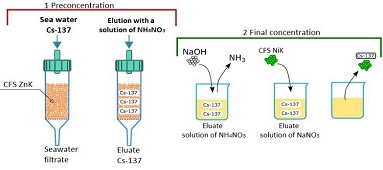
- Materials Applications

Chair
Zheng Cui
Suzhou Institute of Nanotech and Nanobionics, China
Session Introduction
Jethoo A.S
Malaviya National Institute of Technology, India
Title: Potential use of quarry waste as construction and building material: A review
Time : 15:10-15:35
Biography:
Jethoo A.S. is Associate Professor in Department of Civil Engineering, Malaviya National Institute of Technology, Jaipur (India) as expertise in water resources and environmental engineering. Jethoo has his expertise in environment friendly materials. He has published more than 80 papers in International and National journals and conferences. He has served as the head of the Engineering College, Ajmer (India) for three years.
Abstract:
Quarry activity is a highly unsustainable process as it produces land, water, air and noise pollution. It adversely affect the ecology of surrounding areas and generating tons of waste. It has been estimated that of entire quarrying process, about 30% to 40% of quarry product is unfit for commercial use and is discarded as waste. This waste is either the filled back in quarry pit or disposed of in landfill which has its own drawbacks. Various research has been conducted which show that this waste has potential to be used as construction and building material like cement, concrete, bricks, etc. This paper provides a review of such recent studies conducted around the world and gives a general overview of the potential areas where this quarry waste can be used as partial, to full replacement of conventional materials.
Zheng Cui
Suzhou Institute of Nanotech and Nanobionics, China
Title: Applications of inorganic nanomaterials for printed electronics
Time : 15:50-16:15
Biography:
Professor Zheng Cui had worked in the UK for 20 years from 1989 to 2009, first at Cambridge University and then at Rutherford Appleton Laboratory as a Principal Scientist and group leader. He returned to China in October 2009 and joined the Suzhou Institute of Nanotech and Nanobionics where he setup the first research center in China dedicated to printed electronics R&D. He and his research team have developed a wide range of printed electronics technologies and some have been transferred to industry and commercialized. Since 2010, he has authored and coauthored over 50 scientific journal publications, 4 books and 60 patents. He has been a Fellow of UK Institution of Engineering and Technology (IET) since 2004
Abstract:
Nanotechnology has been the most pursued science and technology topic worldwide in the last two decades. If one recounts the successful stories in nanotechnology development, it would undoubtedly be the development of variety of nanomaterials. Many forms of nanomaterials have been discovered. However, most of the reports of nanomaterials are scientific publications. The successful stories of industrial scale applications of nanomaterials are rare and scattered. One challenge is to find efficient and low cost ways to integrate nanomaterials into a device or a system. Recent rapid development of printed electronics offers hopes for industrial scale application of nanomaterials, as most of nanomaterials can be formulated as inks and printed.
The Printable Electronics Research Centre (PERC) has been developing various electronic applications based on printing inorganic nanomaterials in the last 8 years. The applications ranged from solar cells, thin-film transistors, to flexible and stretchable electronic circuits. One successful story is the development of a novel hybrid printing process for making metal-mesh transparent conductive films (Figure 1). The technology has been industrialized for making touch panels in high volume. Notebook computers using the metal-mesh touch panels have been commercialized. Other applications include printed flexible hybrid electronics. Wearable temperature patch which can transmit body temperature wirelessly to a mobile phone has been developed(Figure 2).

Safeer Ahmad Arbab
Islamia College Peshawar, Pakistan
Title: Processing & characterization of eco-friendly interlock construction blocks for earthquake regions
Time : 16:15-16:40
Biography:
Safeer Ahmad Arbab is currently an Assistant Professor at Department of Physics, founder and project Director of center of Material science at Islamia College Peshawar, Pakistan. He earned an MSc in Physics from the University of Peshawar, M.Phil. in Nuclear Physics, and a Ph.D. in Material science. His research interests include Ceramics, clay bricks and eco efficient blocks.
Dr Safeer is also serving as a director of ORIC (office of research, innovation and commercialization) at Islamia College Peshawar since 2015. He organized different seminars, workshop etc for the Encouraging of entrepreneurship in university, research outputs and link between academia and research institutions at national and international level.
Abstract:
Brick and block are construction materials, used for building houses and apartments. Bricks and blocks are used worldwide in developed and developing countries alike, sometimes due to strong cultural aspects, long time tradition or a strong symbol of construction. There are over 1.3 trillion bricks manufactured each year worldwide out of which 75% are made in China and South Asia. Pakistan as the 3rd largest brick producing country in world, this shows the importance of the industry in the country. The International Energy Agency points out that commercial and residential buildings made of traditional bricks consume about 32% global energy and 10% of continuous direct energy-related CO2 emissions for cooling or heating purposes. Pollution kills more people each year than wars, smoking, disasters and hunger, also causing huge economic damage, a study says. Almost half the total deaths occur in just two countries. One of out every six premature deaths in the world in 2015, about nine million was attributed to disease from toxic exposure, according to a recently major study released in the Lancet medical journal. The report says, costing some $4.6 trillion in annual losses or about 6.2 per cent of the global economy.
Based on above mentioned issues, the goal of the study is to develop a clean production that can utilize soil, fiber, fly ash or sand. Replacing bricks with alternatives that are safer, cheaper, cleaner and faster to build. Interlocking property make it as a cost effective and sustainable construction material which has potential to bring durable and affordable homes to developing counties around the world. The main benefit of manufacturing unfired cementitious bricks is that it requires lesser energy than fired bricks and hence the release of carbon dioxide into the atmosphere is 80% less than fired bricks. Soil, fiber, cement and foaming agent to produce light weight, low cost and environmental friendly construction interlock products. Due to their interlocking, to induce at some extent flexibility and light weight properties, it tolerates more intensity of earthquake than brick building.
P.Sarah
Vardhaman College of Engineering, India
Title: Influence of rare earths on the electromechanical coupling factor and operating temperature of strontium bismuth titanate
Time : 16:40-17:05
Biography:
Dr Pasala Sarah, Professor and Dean, R&D, is an accomplished academician with over 20 years of teaching experience blended with additional experience in Research & Administration. The Research experience includes execution of research projects in identifying materials for different needs of the Industry. Her administrative experience includes Vice Principal, Head and Dean Portfolios in large Engineering College of over 2500 students. She has a passion for teaching and is instrumental in bringing in outcome based teaching-learning process to enhance quality of both teaching and learning. Dr.Sarah has unique experience of blending her core competency of Physics with modern technological practices which enable the students to Innovate, Adapt to change and Adopt to the new technologies in the realm of Physics.
Abstract:
Piezoelectric ceramics are widely studied for numerous electronic functional device applications, e.g. in microprocessors resonators, mobile communications filters, inject printers’ actuators and for detecting shock sensors and hard disc drives, etc. The piezoelectrics used for these applications are commonly Lead based materials because of their good piezoelectric behavior. These Lead based piezoelectrics have two major deficits viz. low operating temperatures and toxicity. Keeping these factors in view, the present study attempts to find alternate environment friendly piezoelectrics with good piezoelectric properties and enhanced operating temperatures. Strontium Bismuth Titanate is a suitable alternate piezoelectric.
Strontium Bismuth Titanate SrBi4Ti4O15 (SBT), a member of the Bismuth Layered Structured Ferroelectric (BLSF), is gaining attention because of its Curie temperature and its ability to be tailored for required applications with suitable composition modifications. The higher Curie temperature (535oC) makes it useful for applications at higher temperature. The electromechanical coupling factor of SBT is around 0.40 while that of PZT is of the order of 0.70. The present study analyses the influence of rare earth substitution and the preparation method on the electromechanical coupling factor and Curie temperature of lead free piezoceramics.
This paper evaluates the impact of Rare Earth (RE) substitution on SrBi4Ti4O15 (SBT), (RE: Zirconium (Zr), Samarium (Sm), Neodymium (Nd), Holmium (Ho), Praseodymium (Pr), Dysprosium (Dy)) and also the impact of processing method on Curie temperature and kp (electromechanical coupling factor) of SBT. The temperature at which phase transition from ferroelectric to paraelectric phase occurs is called the Curie temperature (Tc). In this study, the dielectric constant of La-substituted (SBT), Sm- substituted (SBT), Nd- substituted (SBT) has proved to decrease and the TC increased for all the RE substituted SrBi4Ti4O15 except for that with Zr.
An increase in the Tc is observed due to the rare-earth ions substitution and the piezoelectric behavior is enhanced with the increase in rare-earth ions content making these materials useful for piezoelectric applications at temperatures greater than 550oC.
